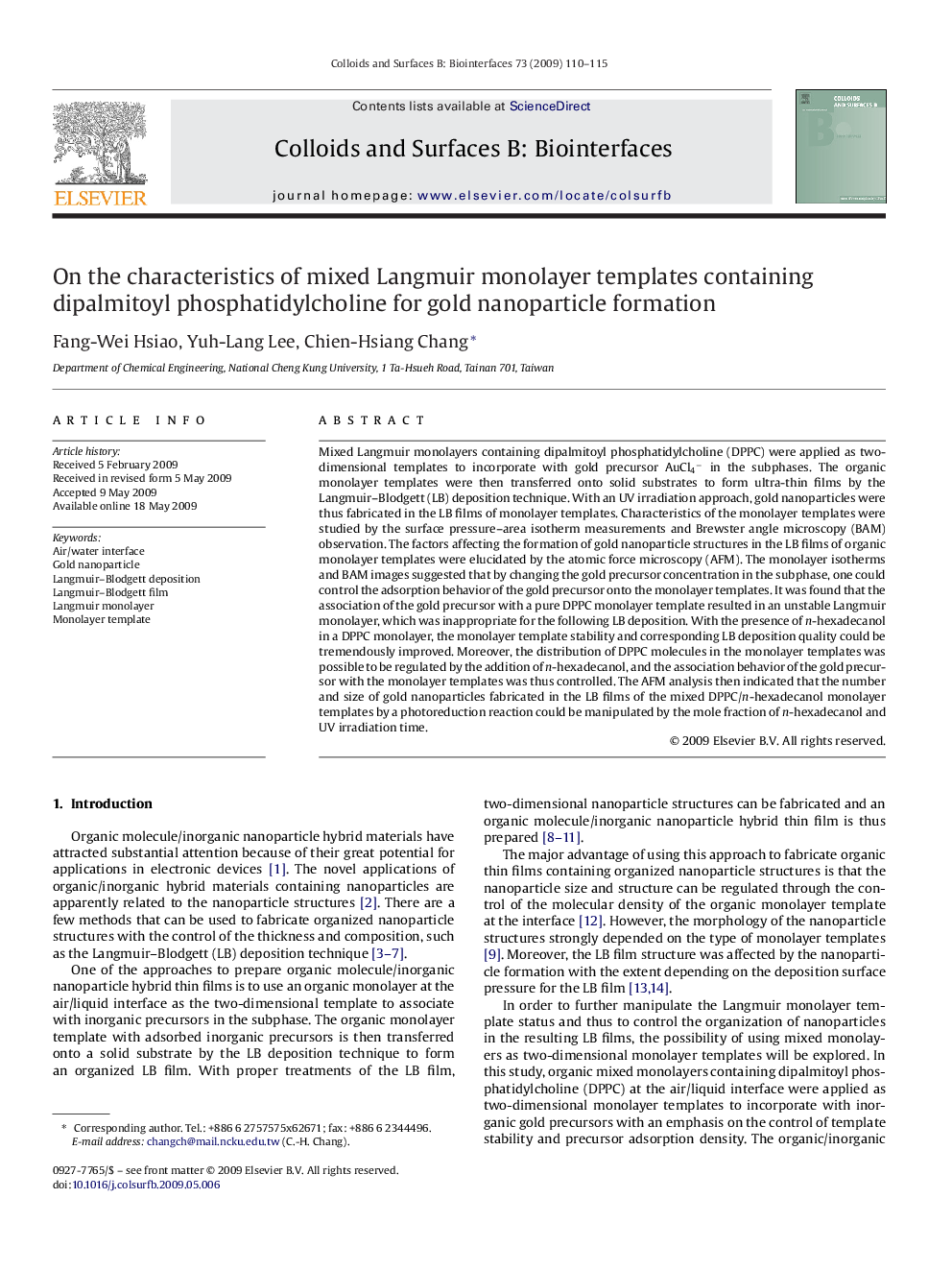| Article ID | Journal | Published Year | Pages | File Type |
|---|---|---|---|---|
| 601644 | Colloids and Surfaces B: Biointerfaces | 2009 | 6 Pages |
Mixed Langmuir monolayers containing dipalmitoyl phosphatidylcholine (DPPC) were applied as two-dimensional templates to incorporate with gold precursor AuCl4− in the subphases. The organic monolayer templates were then transferred onto solid substrates to form ultra-thin films by the Langmuir–Blodgett (LB) deposition technique. With an UV irradiation approach, gold nanoparticles were thus fabricated in the LB films of monolayer templates. Characteristics of the monolayer templates were studied by the surface pressure–area isotherm measurements and Brewster angle microscopy (BAM) observation. The factors affecting the formation of gold nanoparticle structures in the LB films of organic monolayer templates were elucidated by the atomic force microscopy (AFM). The monolayer isotherms and BAM images suggested that by changing the gold precursor concentration in the subphase, one could control the adsorption behavior of the gold precursor onto the monolayer templates. It was found that the association of the gold precursor with a pure DPPC monolayer template resulted in an unstable Langmuir monolayer, which was inappropriate for the following LB deposition. With the presence of n-hexadecanol in a DPPC monolayer, the monolayer template stability and corresponding LB deposition quality could be tremendously improved. Moreover, the distribution of DPPC molecules in the monolayer templates was possible to be regulated by the addition of n-hexadecanol, and the association behavior of the gold precursor with the monolayer templates was thus controlled. The AFM analysis then indicated that the number and size of gold nanoparticles fabricated in the LB films of the mixed DPPC/n-hexadecanol monolayer templates by a photoreduction reaction could be manipulated by the mole fraction of n-hexadecanol and UV irradiation time.
